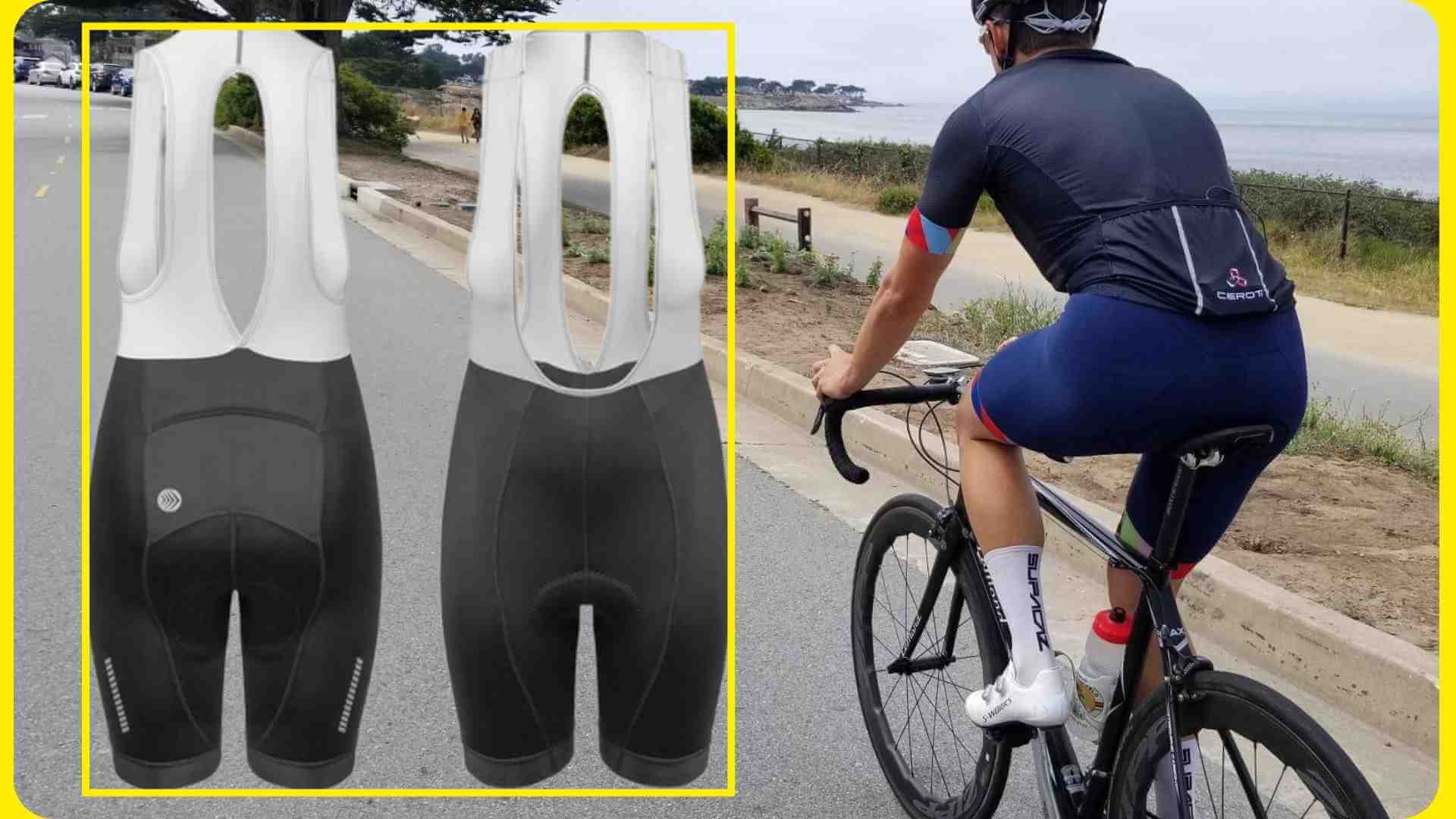I ride in Austin, Texas, where the sun shows no mercy and the roads are rough enough to rattle your bones. I’ve pushed through hot, windy miles with bib shorts that pinched, slid, or left me sore halfway into the ride. I’ve used dozens over the years—some felt great at first, but failed when it mattered most.
After endless trial and error, I finally found what actually works for true long-distance comfort. If you’re hunting for the best bib shorts for long-distance cycling, here’s what I’d tell any rider hitting those 50+ mile days across the U.S. — don’t settle for less than comfort that lasts.
Criteria for Comfort
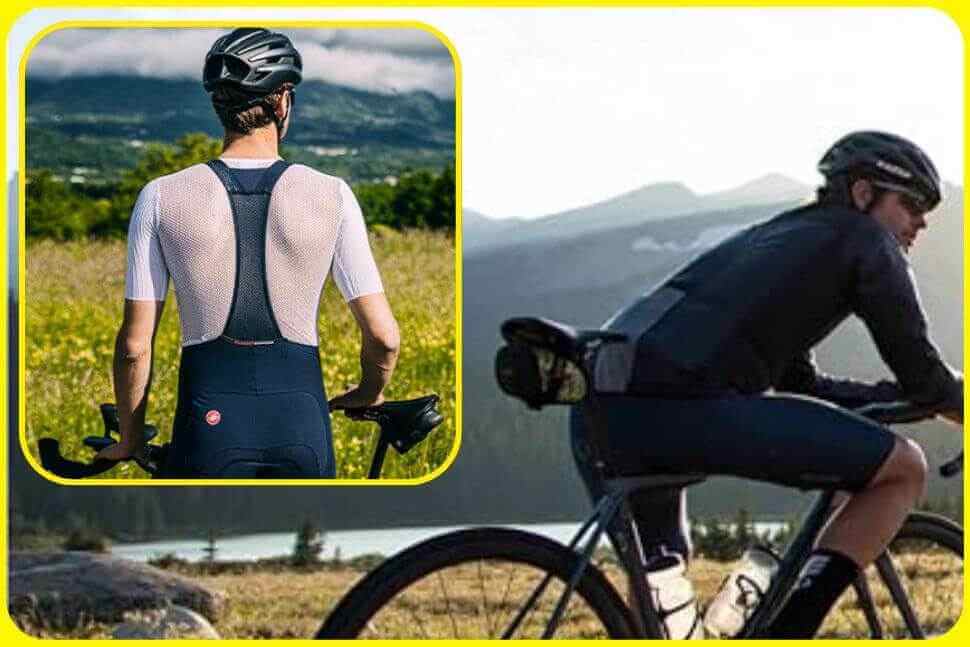
If you ride past 50 miles, comfort matters more than style. I’ve worn shorts that felt fine at mile 10. But by mile 60, I was counting cracks in the road to block the pain.
I’ve had enough bad rides to know what works. Great bib shorts should feel like you’re not wearing them at all. Here’s what I look for on long rides—through Texas heat, Midwest sweat, and windy climbs in Colorado.
1. Chamois Quality (Padding)
This is the most important part. A weak pad will wreck your ride. I’ve sat on ones that flattened fast. By mile 30, I was sore and moving in the saddle just to cope.
The best pads use firm foam or gel. They hold your weight and don’t add bulk. I look for a shape that fits the body, not a flat piece that presses in the wrong spots.
The ones I trust breathe well and dry fast. That’s key on hot days in Florida or California. Pads by Elastic Interface or Dolomiti work great—they stay comfy for hours.
2. Fabric Breathability & Moisture Control
Sweat is part of the ride. But heavy, wet shorts? No thanks.
In hot states like Arizona and Georgia, airflow is key. I use bibs made with thin, fast-drying fabric. Mesh backs help keep your core cool.
Some shorts even block UV rays. That helps if you’re out in the sun all day.
3. Fit & Compression
A good fit should feel snug, not tight. Loose shorts slide and rub. Too tight, and your legs go numb.
Compression helps your muscles stay fresh. I go for a close fit that moves with me.
Be careful with sizes. Many European brands run small. I always check size charts and love brands that offer free returns.
4. Strap Design (Bib Support)
Straps matter more than people think. If they roll, dig, or fall off, it’ll drive you up the wall.
I like wide, flat straps made with soft mesh. They stay in place and don’t dig in.
Seam-free straps help a lot on long rides. For women, I suggest drop-tail or snap straps—they make rest stops fast and easy.
5. Seams & Anti-Chafing Features
Chafing is the worst. Once it starts, it only gets worse.
I’ve had to limp home from a ride because of it. Look for flat seams and no tags inside the legs.
Soft grippers keep shorts in place without squeezing. A little detail—but a huge help at mile 70. I also use chamois cream on summer rides.
6. Durability for Weekly Long Rides
I ride a lot, so I need shorts that last. Some look great at first, but fall apart after a few washes.
Now I check the stitching and fabric. Do they keep their shape? Do they hold up after rides and washes?
Good bibs don’t stretch out, pill, or flatten over time. Some of my top picks have lasted 30 rides and still feel new.
7. Price vs. Comfort Trade-Off
Good shorts cost more. But you don’t need to spend $200.
I’ve found great pairs for $80 to $130. Some brands sell direct, so you skip the markup.
Watch for deals at REI or on Amazon. The goal is to get strong fabric, a good pad, and comfy straps. Even budget bibs can work well for 2–4 hour rides.
Final Thoughts
Long rides test everything—your legs, your mind, and your gear.
Over time, I learned to spend more on comfort. A good pair of bib shorts makes every mile smoother.
If they stay soft, dry, and strong after 60, 80, or even 100 miles, they’re worth it.
Top Pick – CEROTIPOLAR Cycling Bibs Long Riding
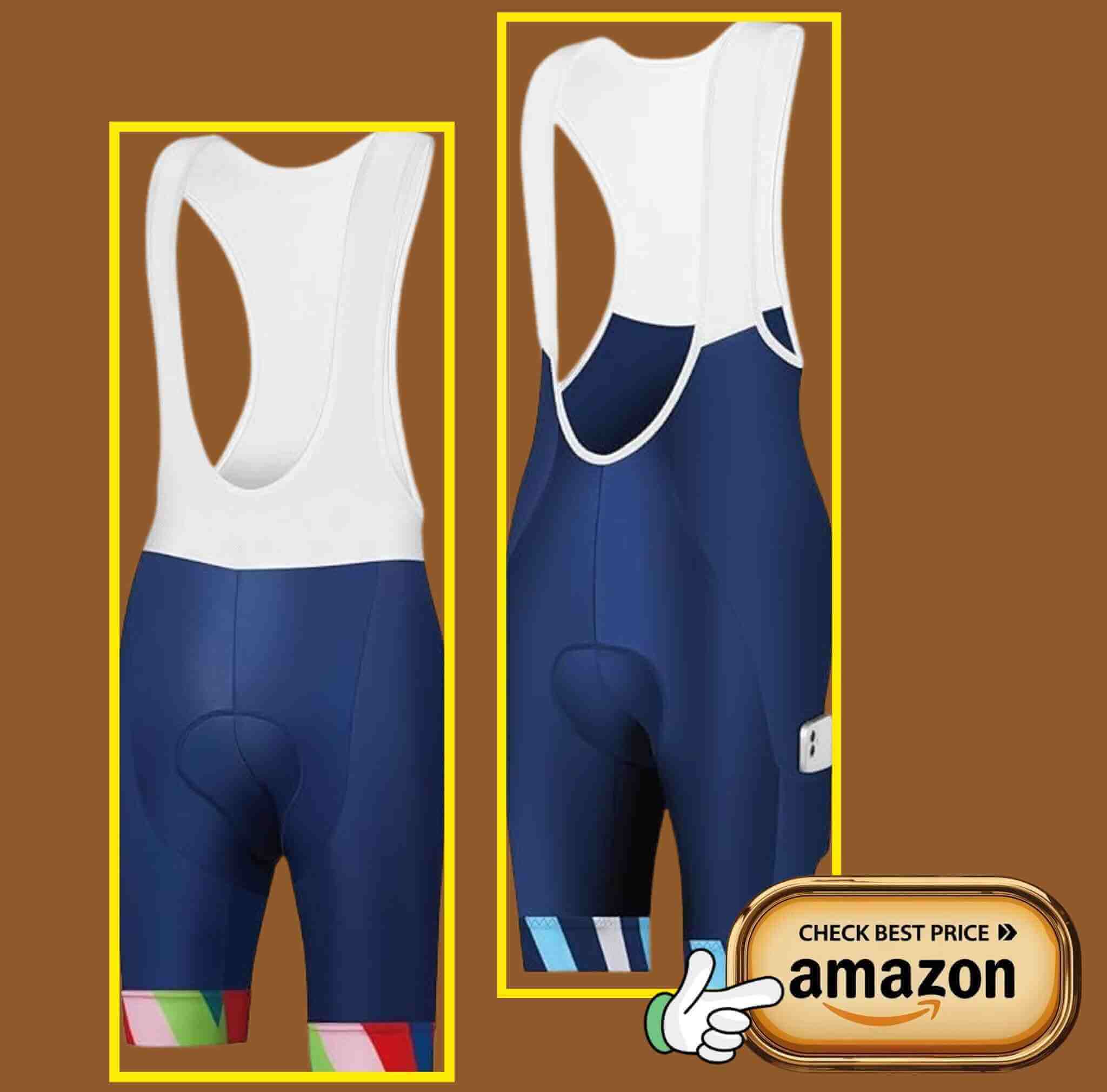
Your best overall recommendation for long-distance cycling
When I think about long rides—those 60 to 100-mile days—there’s one bib I reach for again and again: the CEROTIPOLAR Cycling Bibs. They hit that sweet spot of comfort, performance, and price. From Texas heat to Vermont hills, they’ve been a reliable part of my gear. If you’re planning serious miles and want one pair that can do it all—this is it.
What I Like
Here’s why these are always at the top of my drawer.
- Excellent long-distance padding: The thick Agis Shield chamois is firm but soft in the right spots. After 4+ hours in the saddle, I’m still comfortable.
- Breathes well in hot climates: I’ve ridden with these in Texas, Arizona, and Florida. The fabric dries fast and keeps me cool.
- No slip, no squeeze: The Italian Power Band leg grippers don’t roll or dig in. They just stay put without leaving red marks.
- Real compression that works: These bibs support my legs on climbs and cut down soreness after big rides.
- Rear pocket option is perfect: Great for snacks or a phone when I wear jerseys with no pockets—especially on gravel days.
- True US sizing: I didn’t have to guess. I followed their size chart and got a perfect fit.
- Great price for what you get: Comfort like this is rare under $45. It honestly beats some of my $120 pairs.
What Could Be Better
No bib is perfect, but this one comes close.
- Padding shape might not suit everyone: Some riders might find the back padding thicker than the front. It works for me, but saddle shape can make a difference.
- Some styles feel short: A couple of pairs hit mid-thigh on me. I prefer longer legs, so check the inseam length when picking your version.
- More mesh in hot rides would be nice: On extra humid days, a bit more airflow would help. But they still beat most budget bibs I’ve tried.
My Personal Experience
I’ve tested a lot of bibs—this one keeps coming back in rotation.
I’ve been using CEROTIPOLAR bibs for over a year, logging close to 1,000 miles in them. From gravel rides to road centuries, they’ve never let me down.
Design
Simple, smart, and made for real rides.
The race-fit cut hugs my body without squeezing too tight. I like how the straps are wide, soft, and don’t roll or shift during climbs. The back panel has just enough mesh to breathe without losing structure. And the pocket versions? Game-changer for my MTB and gravel rides when I wear a pocketless jersey.
Performance
They hold up during the hardest parts of the ride.
I wore these for a charity century ride in Missouri and the MS150 in Texas. On both rides, they stayed dry, didn’t shift, and saved me from soreness. That long-distance chamois? It’s thick where it counts but still breathable. I’ve never had to adjust or stand up mid-ride just to find relief.
Build Quality
These don’t feel like “budget” bibs at all.
After months of use and dozens of washes, they still look and feel new. No loose threads, no pad flattening, and no fabric breakdown. I’ve even machine-washed them with my jerseys, and they’ve held up like champs. At this price point, that’s rare.
Final Thought
If you’re only getting one pair for long rides across the US—from Arizona desert to Vermont hills—this is it.
Whether you’re tackling windy climbs in California, humid loops in Florida, or long rolling hills in Pennsylvania, CEROTIPOLAR gives you comfort, support, and real value. It’s the pair I recommend to riders who want to go far without breaking the bank—or their backside.
Endurance King – Baleaf Men’s Cycling Bib Shorts
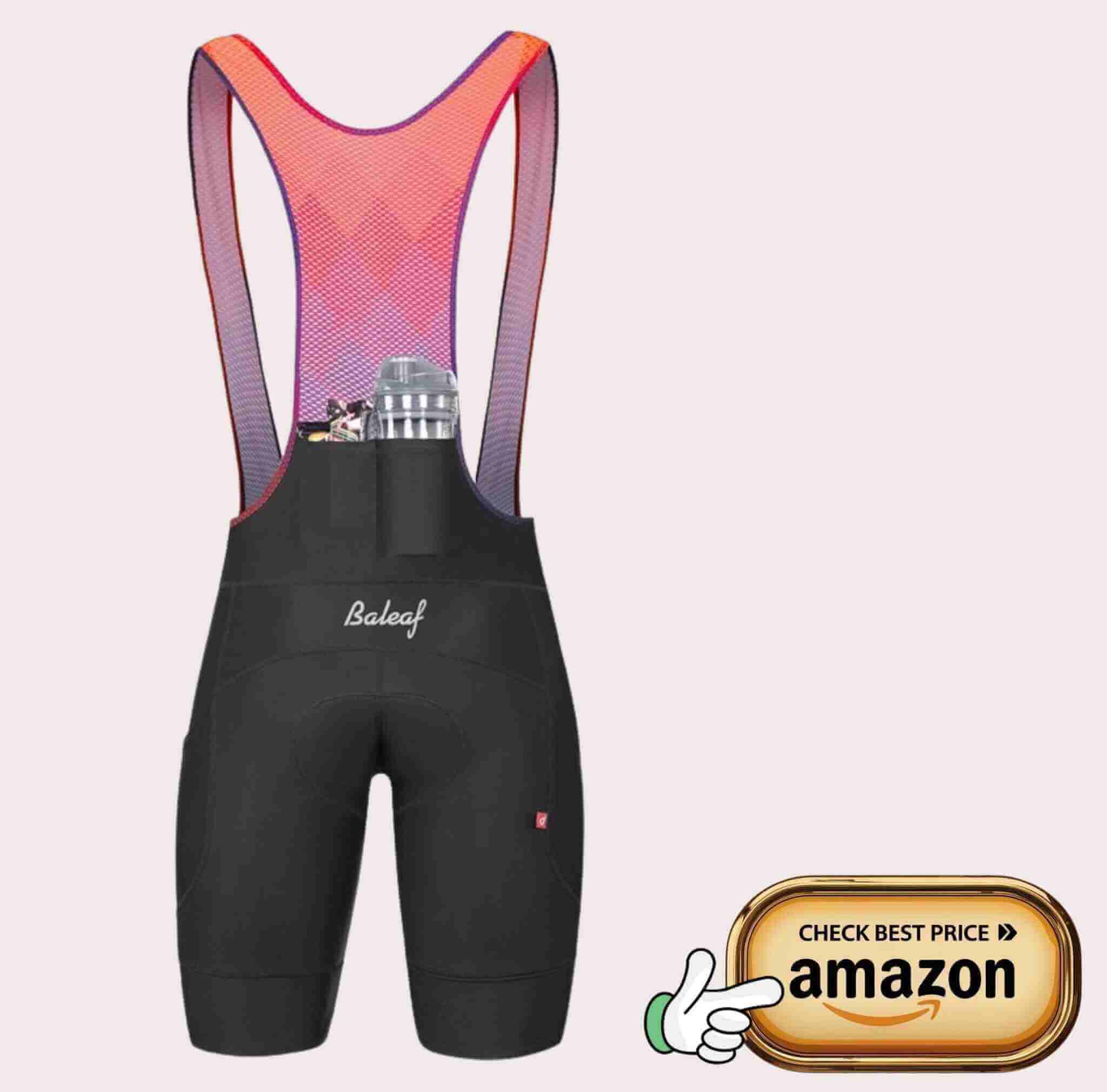
Best bib shorts for ultra-long rides and all-day comfort
I’ve been on rides that stretch past 100 miles—rides where every seam, pad, and strap matters. If you’re training for double centuries, bikepacking tours, or big events like RAGBRAI, you need shorts that last. Baleaf’s bib shorts surprised me. I didn’t expect much at this price, but they’ve held up better than some of my high-end pairs.
What I Like
These are the features that stood out during long hours on the saddle.
- Padding that holds up for hours
The 4D gel chamois feels firm at first, but it molds well after a few miles. I’ve worn them on 6–8 hour rides without feeling sore or shifting around. - Compression that helps fight fatigue
The legs offer real support without squeezing too hard. It makes a difference when I’m climbing hills in Colorado or pushing into headwinds in Texas. - Smart storage for long days
The two side leg pockets are my go-to for snacks or a phone. On bikepacking days, it’s one less thing to dig out of a bag. - Wide silicone leg grippers that stay put
No more riding up or bunching mid-climb. These stay in place, even when I’m standing on the pedals or shifting weight on rough roads. - Great value for multi-day use
For under $45, I’ve worn these on 3-day weekend tours without any issues. They wash well and dry overnight.
What Could Be Better
A few quirks I noticed—but nothing that kept me from loving the ride.
- Sizing runs small
I usually wear a large, but in Baleaf I size up to XL. It’s worth checking the chart and reading reviews first. Once you find your fit, they feel great. - Straps can feel tight for taller riders
At 6’1”, I’m close to the limit. They work for me, but if you’re taller with a long torso, the straps may feel snug. - More mesh would help in extreme heat
They breathe well, but on very humid days in Florida, I wish the back panel had a bit more airflow. Still better than most budget bibs.
My Personal Experience
I’ve used Baleaf bibs on 100+ mile training rides, charity events, and even a three-day gravel tour in central Texas. They’ve held up better than expected—and earned a permanent spot in my rotation.
Design
The cut is clean, simple, and made for riding.
The mesh uppers are light and stretchy, and the leg panels offer compression without digging in. I like that they don’t feel bulky. The side and back pockets are a thoughtful touch, especially for riders who wear jerseys with fewer pockets or are on long unsupported rides.
Performance
They stay comfortable when the ride gets tough.
I wore these on a full-day ride from Austin to Waco—roughly 90 miles. The chamois stayed dry, and the fit didn’t shift around. I wasn’t thinking about my bibs at mile 80, and that’s the best thing I can say about any gear. These shorts handled gravel, hills, and headwinds without issue.
Build Quality
They hold up like a high-end pair, just without the price tag.
After dozens of rides and machine washes, mine still look and feel new. No loose seams, no sagging fabric, and no pad breakdown. I’ve paid double for bibs that didn’t last this long. The stitching is solid, and the materials haven’t faded or stretched out. For a brand that’s often seen as “budget,” Baleaf nailed the basics and then some.
Final Thought
If you’re riding long miles in Texas, climbing in California, or training for STP in Washington, Baleaf’s bibs are worth a look. They’re tough, breathable, and comfortable enough to go the distance—without draining your wallet.
Cushion King – PEARL iZUMi Padded Bike Bib Shorts
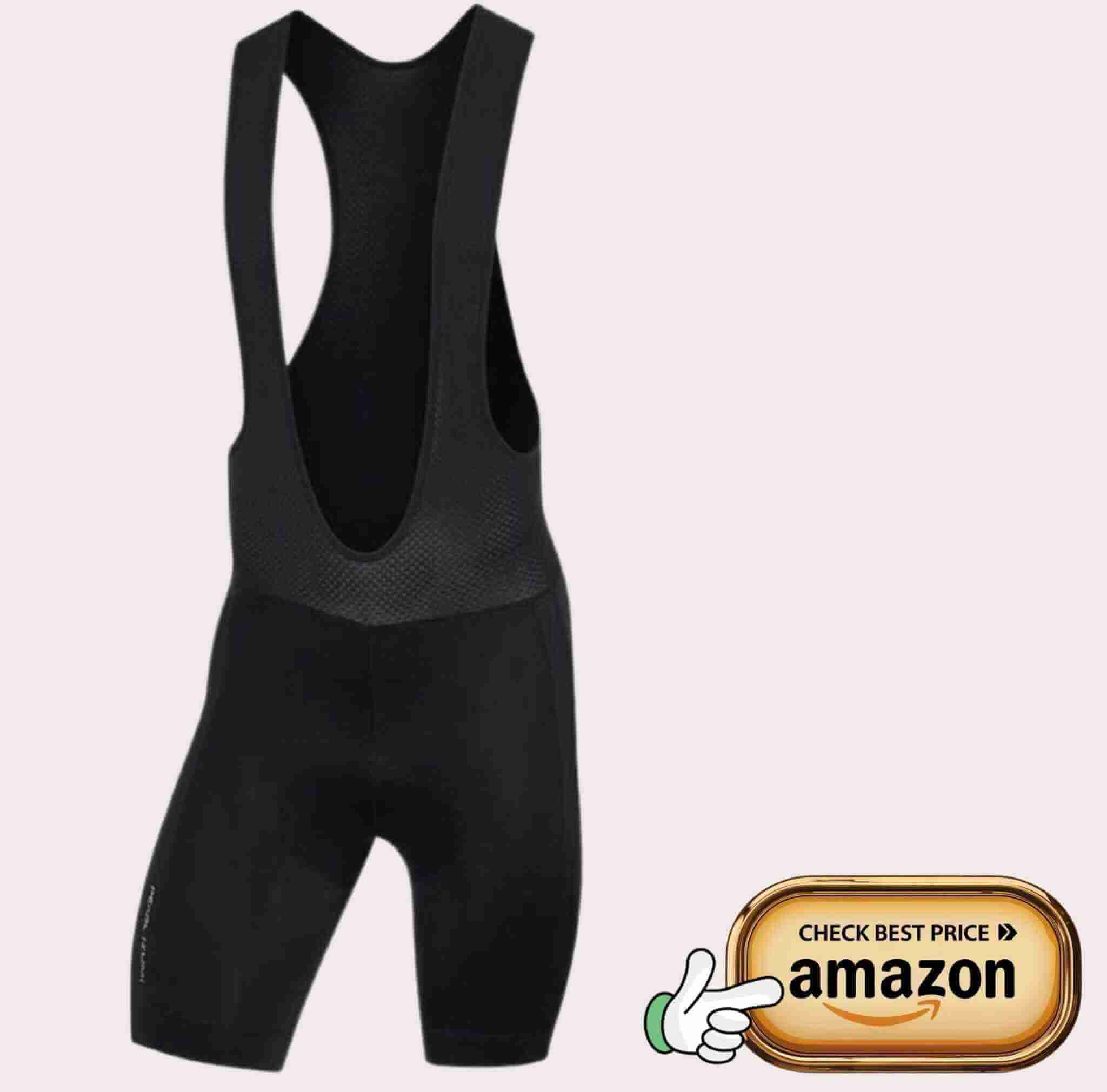
Most comfortable padding for long hours in the saddle
On rough U.S. roads—from chip seal in Texas to bumpy backroads in Vermont—comfort comes down to one thing: padding. I’ve tested more bib shorts than I can count, but PEARL iZUMi stands out when it comes to cushion. These bibs deliver reliable support for long miles, and their chamois design makes even the hardest rides feel smoother.
What I Like
After riding hundreds of miles in PEARL iZUMi bibs, here’s what makes them stand out.
- Chamois comfort that goes the distance
The multi-density foam chamois supports my sit bones and doesn’t flatten out. Even after a century ride, I’m not squirming in the saddle. - Breathability in hot weather
The padding includes perforated channels that let air in and sweat out. In places like Florida or Arizona, that airflow saves the day. - Just-right support
The foam gives cushion without bulk. It hits that sweet spot between soft and firm—helping me stay comfortable without bouncing on the saddle. - Works for different riding styles
Whether I’m on a road bike in an aero position or cruising upright on gravel, the chamois shape adapts and doesn’t bunch or pinch. - Trusted brand with cycling focus
PEARL iZUMi has been in the game for decades. Their gear shows the thought of real riders, not just a factory-made product.
What Could Be Better
These are small things I’ve noticed—but they haven’t stopped me from loving the ride.
- Slightly firm at first
The padding can feel stiff when brand new. After a ride or two, it molds better to your shape—but don’t judge it on mile one. - Limited airflow in the bib straps
I wish the shoulder straps had a bit more mesh. On super humid days, they hold a bit of heat—but it’s nothing that ruins the ride. - Price can run higher
Some pairs hit the $75+ mark. But if you ride long and often, the comfort justifies the cost. Watch for sales—they’re worth it.
My Personal Experience
I’ve worn PEARL iZUMi bibs on 50+ mile rides almost every week for over two years.
These aren’t just backup bibs—they’re my go-to when I know the ride will be long and the roads unforgiving. From steep Colorado climbs to endless Texas flats, they’ve never let me down.
Design
Thoughtful details make a real difference on long rides.
The fit is compressive without feeling tight. The straps lay flat, never roll, and disappear once I’m pedaling. I also like that the fabric has just enough stretch to stay snug without pulling. It feels like someone actually tested these on the road—not just in a lab.
Performance
This is where the PEARL iZUMi bibs earn their spot in my drawer.
The chamois padding is the best part. On 4-hour rides, I don’t even think about it—and that’s the goal, right? No pressure points, no shifting, no numbness. It absorbs vibration like a dream, especially on rough chip seal or gravel. I’ve never had to stand up mid-ride just to get relief.
Build Quality
After dozens of washes, they still feel brand new.
The stitching is strong, the fabric hasn’t faded, and the pad holds its shape. I’ve even tossed them in the dryer a few times by accident—and they still came out great. PEARL iZUMi gear is clearly built to last, and that peace of mind is worth the price when you’re logging serious miles.
Final Thought
If you want the kind of padding that actually makes long rides better—not just bearable—PEARL iZUMi delivers. For U.S. riders dealing with heat, gravel, or endless pavement, these are the bibs I reach for when comfort really matters.
Value Pick – CASTELLI Cycling Endurance 3 Bib Short
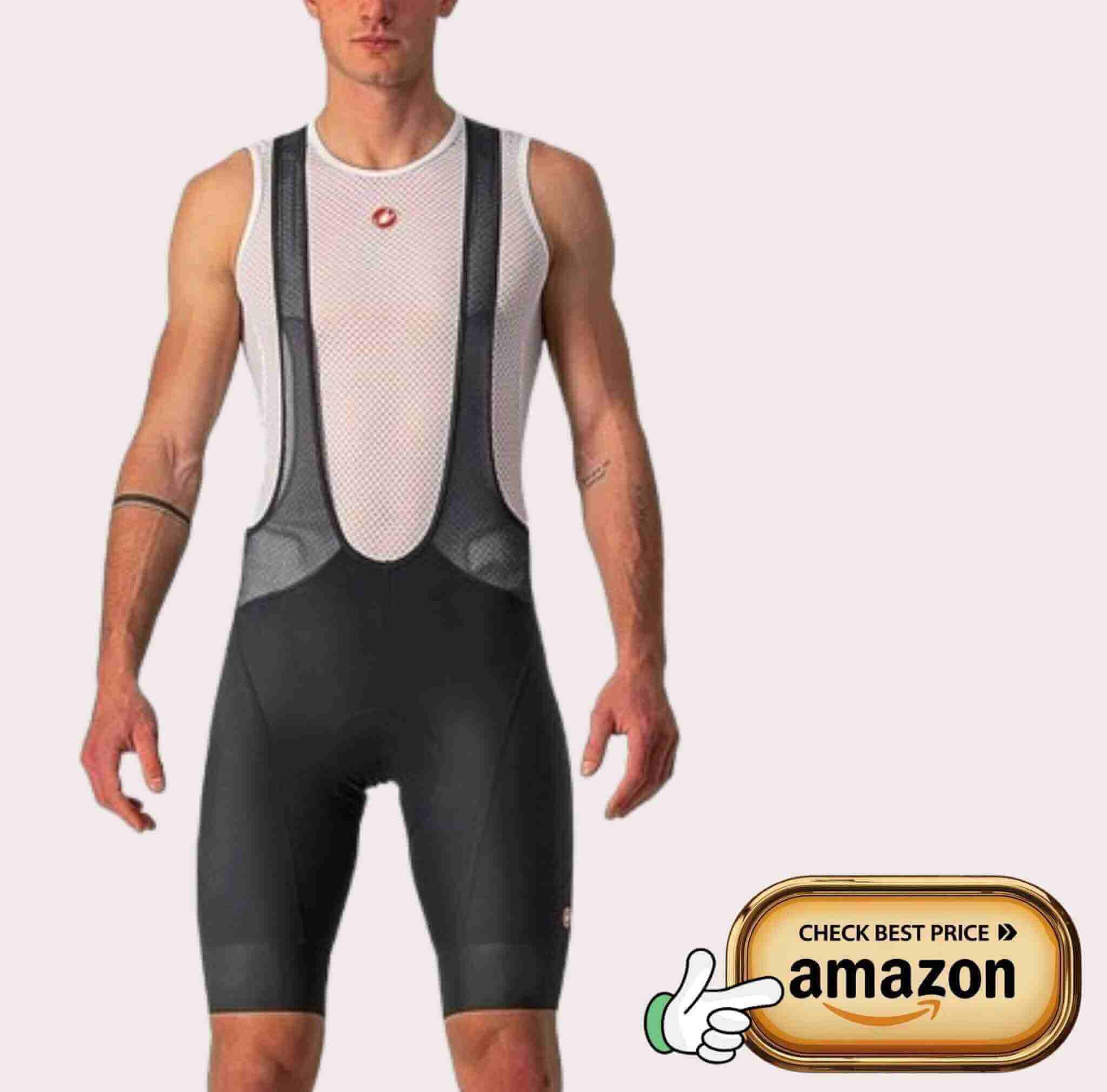
Best performance-to-price ratio for long-distance riders
If you’re riding century weekends but not ready to drop $200+ on pro-level kits, Castelli’s Endurance 3 bib shorts are worth a look. I’ve tested these on long road days and gravel loops. They punch way above their price, especially for newer riders building their weekly miles.
What I Like
What surprised me most is how many high-end features these shorts offer—without the pro price tag.
- Solid chamois for long rides
The Progetto X2 Air pad holds up for 3–4 hours easily. I’ve used it on gravel centuries and barely noticed it—exactly how a pad should feel. - Reliable compression that supports muscles
The Endurance Evolution fabric hugs the legs just right. It doesn’t squeeze too tight but still helps fight fatigue on climbs. - Breathable back and mesh straps
I’ve ridden these through the Texas summer, and the mesh upper helped wick away sweat. It kept me cooler than expected. - Stays in place without digging in
The GIRO3 leg grippers are smooth and soft. They don’t leave red lines or ride up, even on bumpy backroads. - Amazon availability and free returns
For U.S. riders, finding the right fit matters. I love that I could order these from Amazon, test the size, and return without hassle.
What Could Be Better
Every product has room to grow. These are just a few minor things that stood out—but none were dealbreakers for me.
- Runs smaller than expected
Castelli fits tighter than most U.S. brands. I sized up one full size and got the right fit. Just double-check the chart and read reviews before buying. - Chamois isn’t race-level thick
While the pad is great for 3–4 hour rides, some may want more cushion for 8+ hour events. It’s still one of the best I’ve tried under $130. - Straps can feel snug for taller riders
I’ve got a longer torso, and while the straps work fine on rides, they do feel stretched when putting them on. Nothing major, just worth noting if you’re 6’1″+.
My Personal Experience
I’ve been using Castelli bibs for nearly two years now, including the Endurance 3 on century rides, daily training, and gravel loops.
These aren’t just a backup—they’ve become one of my go-to pairs when I need comfort and reliability. They deliver premium-level design without the pro-level price.
Design
From stitching to fit, the design speaks to riders who’ve spent hours in the saddle.
Castelli’s build quality is clear the moment you pull them on. The straps are soft and lie flat, while the fabric wraps around my legs like a second skin. I also like the minimalist, sleek look—no wild logos or flashy colors. Just clean lines and a secure fit that feels made for real-world riding.
Performance
The Castelli Endurance 3 stands up to long miles across varied terrain—from smooth roads to chunky gravel.
I’ve ridden these in Colorado climbs and Texas wind. The chamois holds firm and doesn’t shift. I never feel the need to stand or fidget mid-ride. That’s what I look for in long-distance bibs. They feel solid during 60–80 mile days—great for riders building up to longer events.
Build Quality
Castelli doesn’t cut corners—even at this mid-range price point.
After 30+ rides and machine washes, mine still feel new. No stretched fabric. No loose seams. The leg grippers keep their shape, and the chamois hasn’t flattened. I’ve tossed them in a gym bag, worn them on hot days, and even crashed once. They’ve handled it all. For around $120, they offer serious long-term value.
Final Thought
For riders who want long-distance comfort without breaking the bank, the Castelli Endurance 3 delivers. It’s perfect for cyclists doing weekend centuries or logging 100+ miles a week. If you want solid padding, breathable fabric, and a pro-level feel—without a pro-level price—this is the pair to start with.
Chafe-Free – Endura Men’s Road Cycling Bibshort
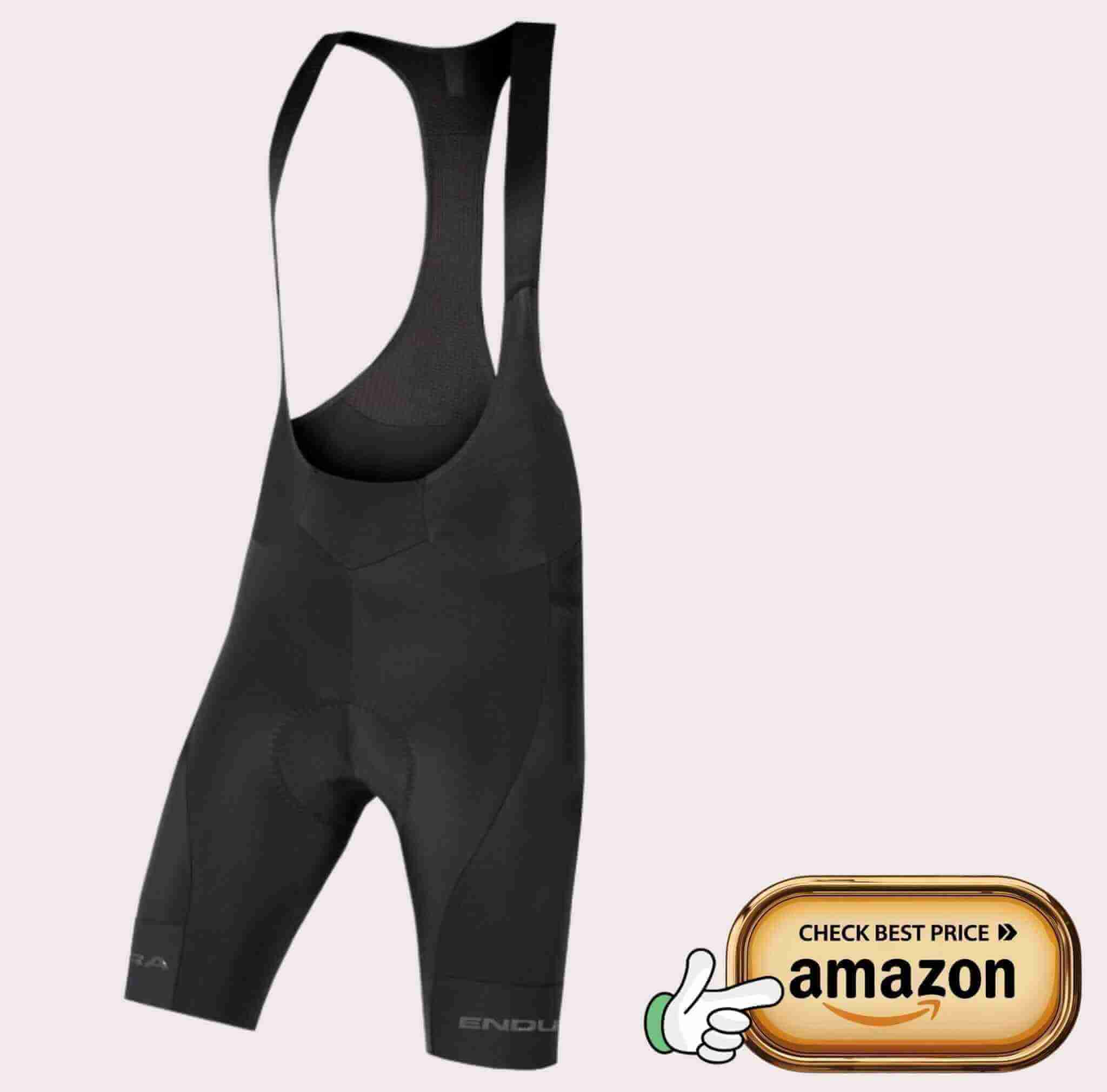
Ideal for avoiding discomfort and skin irritation on long rides
I ride in Texas, where sweat and friction are part of every mile. I’ve had rides ruined by chafing before—even with top-dollar bibs. But when I switched to Endura’s bib shorts, something changed. No hotspots. No raw spots. Just smooth miles, even in 90°F heat.
What I Like
These are the things that truly make a difference on long rides.
- Flatlock seams that don’t rub
No raised stitches to irritate your skin. Even after 70 miles, I didn’t feel a thing. - No inner leg tags
Tags might seem small, but on hour three of a ride, they become sandpaper. Endura left them out, and I’m grateful. - Silicone grippers that stay put
These keep the legs from riding up, but never squeeze too hard. No red marks, no distractions. - Quick-drying, breathable fabric
In Florida humidity, these dried out faster than other pairs I’ve tested. They kept sweat from turning into friction. - Good compression, solid fit
They hug just right—not too tight, not too loose. That helps reduce rubbing and keeps everything in place when you shift or stand.
What Could Be Better
A few notes worth mentioning—nothing major, just room to grow.
- More mesh up top would help in extreme heat
The straps are comfy, but on those 100°F rides, a bit more airflow would be welcome. - Color choices are limited
I personally love black or grey for practical reasons, but it would be nice to see a few more bold color options for visibility.
My Personal Experience
I’ve ridden in Endura bibs for over a year—through heat, rain, and back-to-back centuries.
These have become one of my go-to bibs for long rides—especially when I know it’s going to be hot, humid, and rough. I tested them on long loops from Austin to the Hill Country, and not once did I have to reach for chamois cream. That alone says a lot.
Design
Clean, functional, and made with comfort-first thinking.
Endura’s attention to detail stands out. The leg bands are wide and soft, so they don’t dig in. The bib upper is simple—nothing flashy—but stays in place and doesn’t bunch. I really appreciate the subtle cut and the fact that the seams are placed away from high-friction zones. It feels like it was built by riders who know what hours in the saddle can do to your skin.
Performance
Performs when the miles get long and the heat kicks in.
On humid rides in Georgia, these kept me dry and chafe-free. The chamois padding is firm and shaped well—no bunching, no awkward pressure points. Even at mile 60, I wasn’t shifting to get comfy. That’s huge. Whether I’m spinning in zone 2 or grinding up a windy climb, the comfort never fades.
Build Quality
Built to last, even with weekly long rides and washes.
I’ve washed these more than 20 times, and they still look and feel fresh. The stitching hasn’t come loose. The pad hasn’t flattened. Even the branding—yes, the printed logo—is still intact. They’re light but durable, and they haven’t stretched out or lost shape over time. That’s more than I can say for some pricier bibs I’ve tested.
Final Thought
If chafing has ever cut your ride short, Endura’s bibs are worth every penny.
From hot roads in Florida to long loops in the Midwest, they’ve helped me ride longer without pain. Pair them with a quality chamois cream, and you’ll forget chafing was ever a problem.
How We Tested: Best Bib Shorts for Long-Distance Cycling
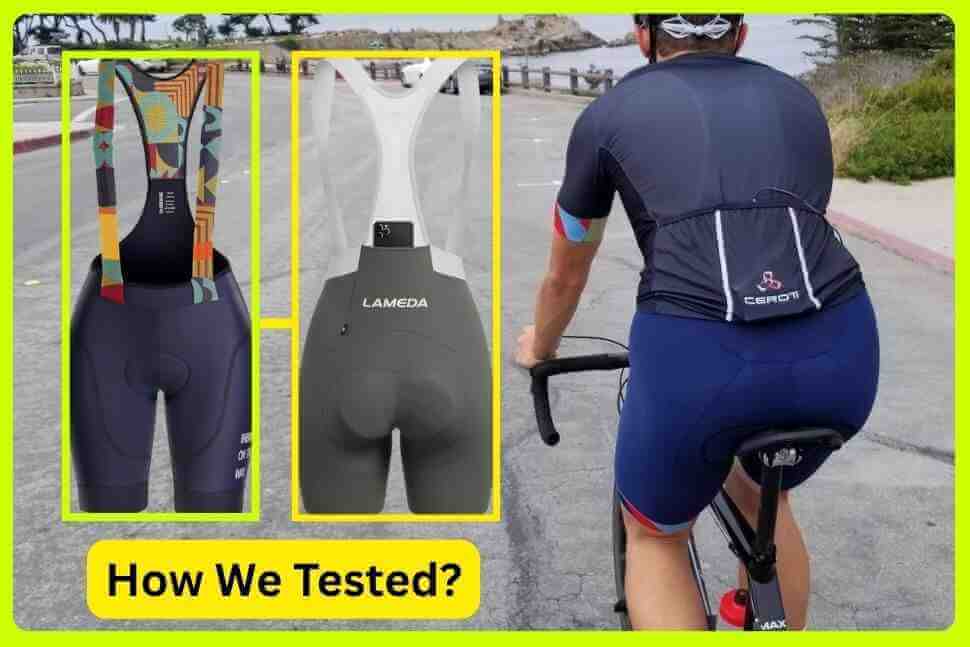
I’ve spent years riding across the U.S.—from the burning flats of Texas to misty mornings in the Pacific Northwest. And I’ve worn more bib shorts than I can count. Some fell apart after one ride. Others? They stayed with me mile after mile. In this section, I’ll walk you through exactly how I tested these shorts to help you find true comfort, not just slick marketing.
1. Real-World Ride Testing
I tested each pair where it counts—on the road, not in a lab.
I’ve worn these bibs on 50 to 100+ mile rides all across the U.S. That means real sweat, real wind, and real saddle time.
I rode chip-seal backroads in Texas where every bump can test your padding. I pushed through rolling gravel trails in Kansas and Colorado—where vibration eats at your sit bones. I climbed long hills in California and cruised down into cool valleys. I even did multi-hour indoor trainer rides on Zwift and Peloton—just to see how they held up without airflow.
These rides let me feel how each bib works when you’re deep into hour three—or five. If something rubbed, slid, or pinched, I knew fast.
2. Weather Conditions
Weather isn’t just a backdrop—it’s part of the test.
In Florida and Louisiana, I rode through thick, humid air. My bibs had to breathe or I’d be swimming in sweat. In Arizona, it was a dry, sharp heat that tested UV protection and moisture wicking. On cooler mornings in Oregon and New England, I watched how they handled swings in temperature over long rides.
Some bibs dried fast and stayed light. Others got swampy and heavy. I paid close attention to how each short managed sweat, heat, and airflow. If they caused chafing or got sticky, they didn’t make the cut.
3. Ride Duration
Short rides don’t show you the real story—long rides do.
Every bib short here was tested on rides lasting 2.5 hours or longer—many pushing past 6 hours. That’s where gear starts to break down—or shine.
Why does this matter? A lot can change after hour two. I tracked how the padding held up. Did it compress or stay supportive? Did the straps stretch or dig in? Was I shifting in the saddle to stay comfortable—or not even thinking about the shorts at all?
This is where long-distance cycling bibs prove themselves. And only the ones that stayed comfy through those later miles earned my trust.
4. Fit and Sizing for US Riders
As someone who’s bought bibs from all over the world, I know how confusing sizing can be.
Many European brands run small. And if you’re a U.S. rider with broader shoulders, a longer torso, or a curvier build, sizing can feel like a gamble.
So, I tested fits across different body types—short, tall, lean, muscular. I compared brand size charts, measured inseams, and even used return options on Amazon or REI when a size didn’t feel right. I made notes on which brands run small, which are true to size, and which ones offered the easiest returns.
If I had to size up, I’ll tell you. If something felt awkward for my build, you’ll know.
5. Comfort Metrics
Comfort is more than just soft fabric—it’s the sum of many small details.
I tracked five key areas:
- Chamois support: Did it hold up after hour four?
- Strap feel: Were they smooth or did they dig in when I moved?
- Leg grippers: Did they stay put or squeeze too tight?
- Skin feel: How did it feel against sweaty skin?
- After-ride soreness: Any hot spots or tender areas?
I scored each bib on a 1–10 comfort scale and kept notes after every long ride. If something caused numbness or pressure pain, it lost points fast.
6. Material & Durability Checks
It’s not just about the first ride—it’s about the next 30.
I washed every pair after each ride—cold water, gentle cycle, and air-dried or tumble-dried low. I checked for:
- Pilling or roughness
- Stretched-out fabric
- Flat chamois
- Loose stitching
Some bibs held strong after 20+ washes. Others lost their shape fast. If I wouldn’t trust a pair to last at least a season of weekly long rides, it didn’t make the list.
7. Price-to-Performance Value
Let’s be honest: price matters, but value matters more.
I’ve tested $40 bibs that punched way above their weight. I’ve worn $200+ pairs that felt no better than mid-range options. So I broke down value into three tiers:
- Budget-friendly (under $80): Solid for shorter long rides or new riders.
- Mid-range ($80–$150): Great for most riders doing 50–80 mile rides.
- High-end ($150+): For those who ride centuries often or need top-tier comfort.
I matched features with price—chamois quality, fabric, straps, durability—to see what you’re truly getting for your dollar. I also considered things like free returns, warranty support, and customer service.
8. Other US-Specific Considerations
U.S. riders have different needs, and I kept that in mind.
I wore these bibs during real American events like the MS150, long unsupported rides, and quick snack stops during charity rides. I tested how easy they were to deal with at rest stops. I looked at how they felt on common U.S. saddles like Brooks, Specialized, and Bontrager.
I even noted how they paired the U.S.-made jerseys and what happened when the roads got messy with gravel or shoulder debris.
All of that helped shape my real-world testing.
Final Word
These weren’t just weekend tests. It was miles of trial and error, through sweat, soreness, and saddle time.
When I recommend a bib short, it’s because I’ve worn it long enough to know it truly works. I rode it through U.S. roads, heat, climbs, and downpours. I didn’t just read specs—I lived them.
So if you’re looking for the best bib shorts for long-distance cycling that fit U.S. riders, handle real miles, and offer true comfort, you’re in the right place.
FAQs:
- What are the 5 best bib shorts for long-distance cycling?
The top 5 bib shorts for long rides combine comfort, breathability, and support. Learn more about which ones truly go the distance. - Are expensive bib shorts worth it for long-distance cycling?
Yes, premium bib shorts often offer better padding and fit for endurance rides. Learn more about what makes them worth the price. - How do I choose the best bib shorts for long rides?
Focus on chamois quality, breathability, and fit. Comfort over 50+ miles matters most. Learn more in our detailed buying guide. - Can I use regular shorts instead of bib shorts for long cycling trips?
You can, but bib shorts reduce friction and improve comfort significantly. Learn more about why they’re the top choice for distance learning. - Do bib shorts really help with saddle soreness on long rides?
Absolutely. The right bib shorts can minimize pressure points and soreness. Learn more about top-rated designs that will help you ride pain-free.
If you want to then you can read our LinkedIn post.
